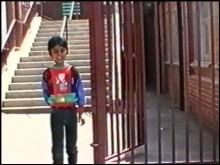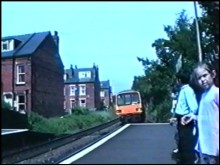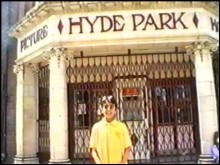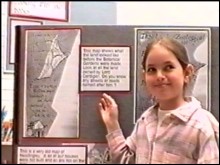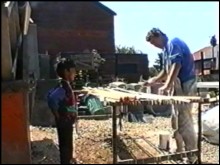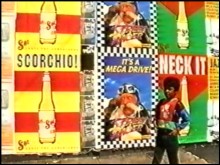Centre for Creative Media Research > Video Critical
Brudenell Primary School: Making the video
|
|
This video project, unlike the others, had a certain remit requested by the class teacher, that the children record some material about the Botanical and Zoological Gardens which were a feature of the locality 150 years ago. These gardens had already been the subject of a project by the children in class, and the teacher felt it would be useful to have the video tape as a resource to show to children in subsequent years. The requirement did not affect the aims of the present study, however, since the coverage of the historical site was simply recorded as we went around the area in a manner which was otherwise comparable to the other projects. This group were the second youngest, aged between seven and nine. Interviewed in the first week, the children demonstrated that they had studied the local area, with a particular focus on local history, but had not covered the environment in terms of environmental problems, or the global environment. Their collective knowledge about the history of the old gardens was impressive, however. Asked to list environmental problems, the children came up with litter, pollution, toxic waste, and endangered wildlife, but few others, letting their nominations wander on to somewhat more general (but not inappropriate) choices such as earthquakes, volcanoes and war - and, eventually, traffic, which was seen as both dangerous and polluting. However, the children did not apparently know about the ozone layer, and were vague about acid rain. Nevertheless, they agreed that they were generally concerned about environmental problems, and could each name a concern, mostly about endangered animals and hunting. It later emerged that three of the six children were vegetarians, stemming from a belief that animals should not be killed to be eaten - one had made this choice three years previously (his parents weren't), whilst the other two had vegetarian parents, but said that they would stay that way by choice now anyway. Making the video around and about in the Hyde Park residential area, the children were very enthusiastic, and were eager to fit a great deal of filming into the available time. They showed some awareness of the potential structure of the video when edited, for example by recording first the material with the maps in the classroom, and appearing to understand that this could be mixed with their location work later in the process. Summary Their responses when the group interviewed each other in the final week, showed the children talking much more comfortably about 'the environment' than they had at first. This could simply be because they by then knew what was meant by the term when questions were asked about it, but their ability to connect abstract knowledge about anti-environmental factors to their own neighbourhood did seem to have been enhanced. The enthusiasm of the whole group meant that all contributed something, and children whose first language was not English were able to display their abilities to the full in this non-written form. The video project appeared to bring the subject of the environment 'alive' for the children concerned. |
![]()
The text and images on this site are by David Gauntlett, © 1997, 2004.
Back to > Video Critical home.

